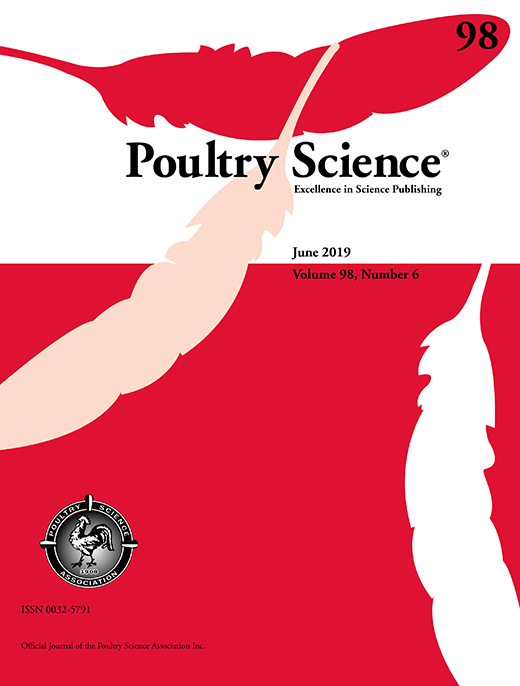Ver ítem
- xmlui.general.dspace_homeCentros Regionales y EEAsCentro Regional Buenos Aires SurEEA BalcarceArtículos científicosxmlui.ArtifactBrowser.ItemViewer.trail
- Inicio
- Centros Regionales y EEAs
- Centro Regional Buenos Aires Sur
- EEA Balcarce
- Artículos científicos
- Ver ítem
Evaluation of different live Salmonella enteritidis vaccine schedules administered during layer hen rearing to reduce excretion, organ colonization, and egg contamination
Resumen
Salmonellosis caused by Salmonella Enteritidis is a widespread zoonosis and poultry products are an important source of infection. This study was carried out to evaluate the protection of different vaccination schedules in layers using a live commercial attenuated Salmonella Enteritidis vaccine based on strain Sm24/Rif12/Ssq (AviPro® Salmonella Vac E, ELANCO) during rearing and egg production. Three hundred and fifty Salmonella-free chickens were
[ver mas...]
Salmonellosis caused by Salmonella Enteritidis is a widespread zoonosis and poultry products are an important source of infection. This study was carried out to evaluate the protection of different vaccination schedules in layers using a live commercial attenuated Salmonella Enteritidis vaccine based on strain Sm24/Rif12/Ssq (AviPro® Salmonella Vac E, ELANCO) during rearing and egg production. Three hundred and fifty Salmonella-free chickens were distributed into 7 vaccinated groups and 1 unvaccinated group. Different vaccination schedules were performed combining either 1, 2, or 3 oral gavage doses. Chickens from Group A, B, and C were vaccinated once, either at the first day, at 7 or 16 wk old, respectively. Chickens from Group D were vaccinated twice—at the first day and 7 wk old. Chickens from Group E were vaccinated twice—at the first day and 16 wk old. Chickens from Group F were vaccinated twice—at 7 and 16 wk old. Chickens from Group G were vaccinated 3 times, following the manufacturer's recommendation: at the first day, 7 and 16 wk old. Chickens from Group H remained unvaccinated. Five challenge trials numbered 1 to 5 were carried out at 8, 12, 16, 29, and 55 wk old, respectively. After challenge, chickens were sampled by cloacal swabbing and, after euthanasia, livers, ovaries, spleens, and cecal contents were cultured to isolate S. Enteritidis. Additionally, eggs were collected after challenge and cultured to isolate S.Enteritidis on egg shells (Trials 4 and 5). Protection against experimental infection with a virulent nalidixic acid resistant S. Enteritidis strain K285/94, was evaluated by measuring reduction of excretion, colonization, invasion into organs, eggshell contamination, and egg production. The live S. Enteritidis vaccine protected the hens by reducing S. Enteritidis excretion, isolation from organs, and egg contamination. Higher protection throughout laying period was afforded after administration of three vaccine doses during rearing period.
[Cerrar]

Fuente
Poultry Science 98 (6) : 2422–2431 (June 2019)
Fecha
2019-01-25
Editorial
Oxford University Press
ISSN
0032-5791
1525-3171
1525-3171
Formato
pdf
Tipo de documento
artículo
Palabras Claves
Derechos de acceso
Restringido
 Excepto donde se diga explicitamente, este item se publica bajo la siguiente descripción: Creative Commons Attribution-NonCommercial-ShareAlike 2.5 Unported (CC BY-NC-SA 2.5)
Excepto donde se diga explicitamente, este item se publica bajo la siguiente descripción: Creative Commons Attribution-NonCommercial-ShareAlike 2.5 Unported (CC BY-NC-SA 2.5)

